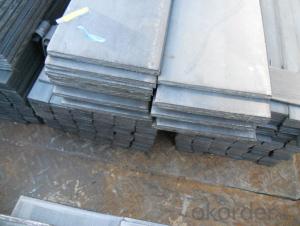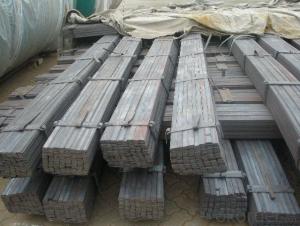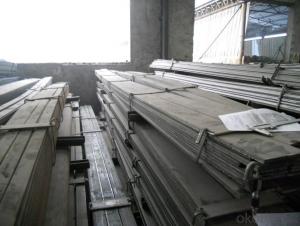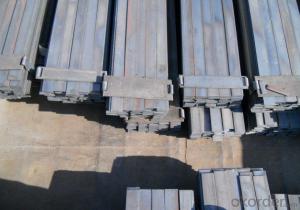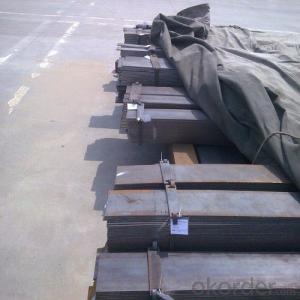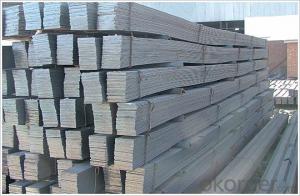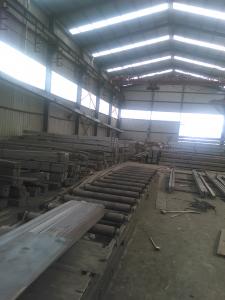Slit Cutting Flat Bar in Q235B with High Quality and Best price
- Loading Port:
- Tianjin
- Payment Terms:
- TT OR LC
- Min Order Qty:
- 25 m.t.
- Supply Capability:
- 10000 m.t./month
OKorder Service Pledge
OKorder Financial Service
You Might Also Like
Product Description:
OKorder is offering high quality Slit Cutting Flat Bar at great prices with worldwide shipping. Our supplier is a world-class manufacturer of steel, with our products utilized the world over. OKorder annually supplies products to European, North American and Asian markets. We provide quotations within 24 hours of receiving an inquiry and guarantee competitive prices.
Product Applications:
Slit Cutting Flat Bars are ideal for structural applications and are widely used in the construction of buildings and bridges, and the manufacturing, petrochemical, and transportation industries.
Product Advantages:
OKorder's Slit Cutting Flats Barare durable, strong, and resist corrosion.
Main Product Features:
· Premium quality
· Prompt delivery & seaworthy packing (30 days after receiving deposit)
· Corrosion resistance
· Can be recycled and reused
· Mill test certification
· Professional Service
· Competitive pricing
Product Specifications:
Manufacture: Slit Cutting
Grade: Q195 – 235
Certificates: ISO, SGS, BV, CIQ
Length: 6m – 12m, as per customer request
Packaging: Export packing, nude packing, bundled
Chemical composition of Q235
Alloy No | Grade | Element(%) | ||||
C
| Mn
| S
| P
| Si
| ||
Q235
|
B
|
0.12—0.20 |
0.3—0.7 |
≤0.045 |
≤0.045
|
≤0.3
|
Physical properties of Q235
Alloy No | Grade | Yielding strength point(Mpa) | Tensile strength (Mpa) | Elongation after fracture(%) | ||||||
Thickness (mm) | Thickness (mm) | |||||||||
≤16 | >16--40 | >40--60 | >60--100 | ≤16 | >16--40 | >40--60 | >60--100 | |||
≥ | ≥ | |||||||||
Q235 |
B |
235 |
225 |
215 |
205 |
375--500 |
26 |
25 |
24 |
23 |
FAQ:
Q1: Why buy Materials & Equipment from OKorder.com?
A1: All products offered byOKorder.com are carefully selected from China's most reliable manufacturing enterprises. Through its ISO certifications, OKorder.com adheres to the highest standards and a commitment to supply chain safety and customer satisfaction.
Q2: How do we guarantee the quality of our products?
A2: We have established an advanced quality management system which conducts strict quality tests at every step, from raw materials to the final product. At the same time, we provide extensive follow-up service assurances as required.
Q3: The products are invoicing on theoritical weight or on actual weight?
A3: We can do it in both manners, according to the customers' request.
Images:
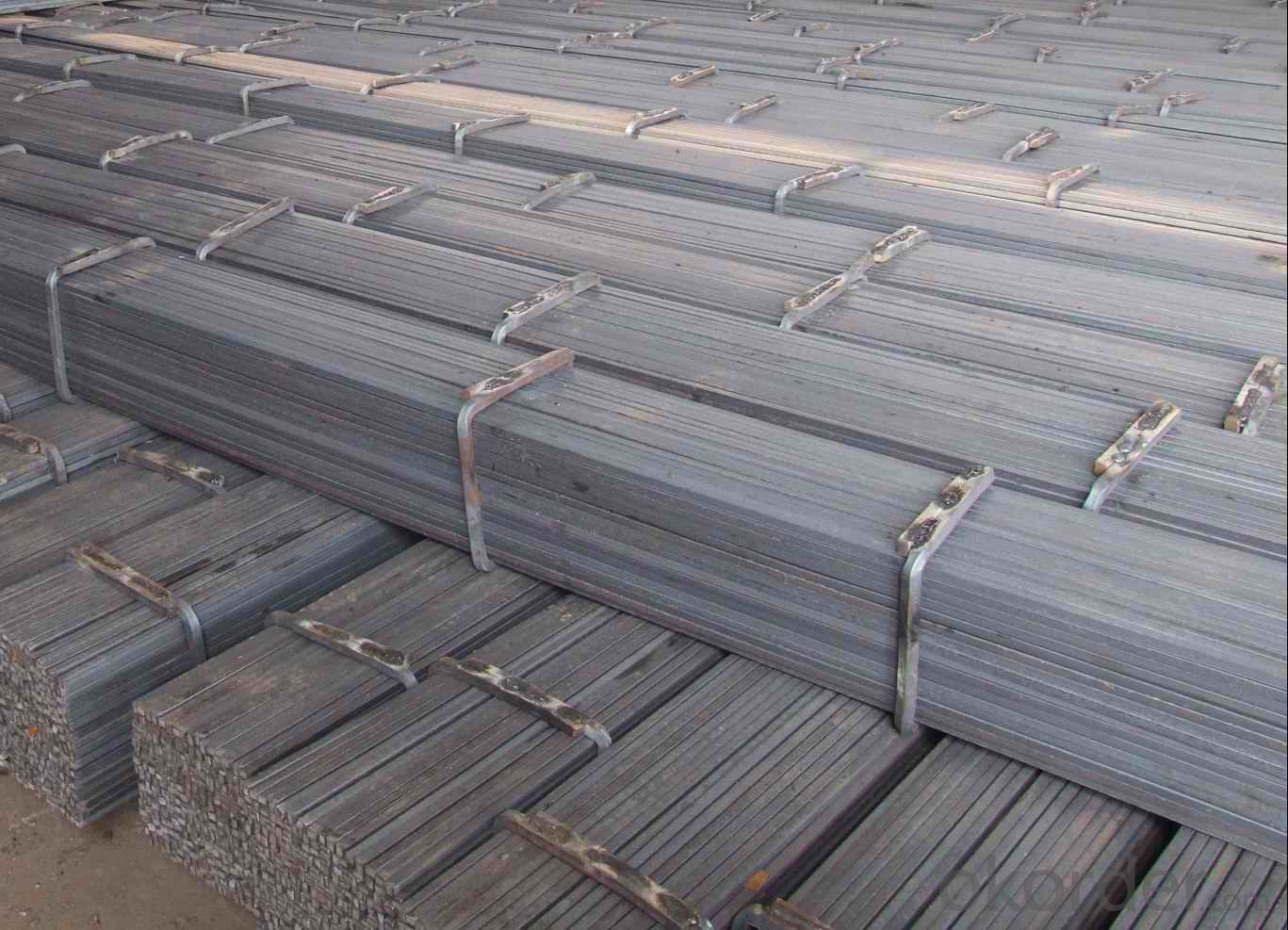
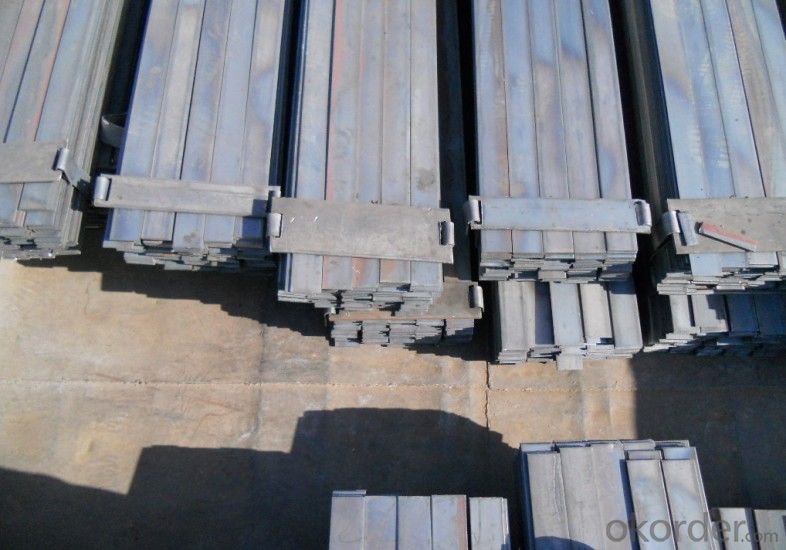
- Q:What are the common factors affecting the price of steel flat bars?
- The common factors affecting the price of steel flat bars include the cost of raw materials, such as iron ore and scrap metal, as well as production and labor costs. Market demand and supply dynamics, including fluctuations in global steel prices, also play a significant role in determining the price of steel flat bars. Other factors like transportation costs, currency exchange rates, and government regulations can also impact the final price.
- Q:Can steel flat bars be used for making brackets or supports for HVAC ductwork?
- Yes, steel flat bars can be used for making brackets or supports for HVAC ductwork. Steel flat bars provide strength and durability, making them suitable for supporting and securing ductwork in place.
- Q:How do steel flat bars contribute to the overall efficiency of healthcare structures?
- Steel flat bars contribute to the overall efficiency of healthcare structures by providing structural support and stability. These bars are commonly used in the construction of hospital beds, medical equipment, and other infrastructure within healthcare facilities. Their high strength and durability ensure the longevity of these structures, reducing maintenance costs and the need for frequent replacements. Additionally, steel flat bars can be easily fabricated and installed, saving time and effort during the construction process. Overall, their usage enhances the reliability and efficiency of healthcare structures, ultimately benefiting patients and healthcare professionals.
- Q:How many steel tubes can be used instead of 60 * 10 flat steel?
- It can also be hardened by machine speed. Good weldability. The abrasion resistance and fatigue strength are better than 304 stainless steel.
- Q:Are steel flat bars suitable for food processing applications?
- Depending on the specific requirements and conditions, steel flat bars may be appropriate for use in food processing applications. Steel is a strong and durable material that can withstand high temperatures, pressure, and harsh cleaning agents commonly found in food processing facilities. Before using steel flat bars in food processing, certain factors should be considered. The type of steel used is crucial, with stainless steel being the preferred choice for food processing applications. Stainless steel, particularly grades 304 or 316 with high corrosion resistance, offers excellent protection against corrosion, staining, and bacterial growth, ensuring hygienic conditions. The surface finish of the steel flat bars is also important. A smooth and polished finish is preferred to prevent the accumulation of dirt, bacteria, and other contaminants. This promotes cleanliness and helps prevent cross-contamination. Moreover, it is essential that the steel flat bars are free from any coatings or finishes that could release harmful substances into the food during processing. Compliance with food safety regulations and certifications is necessary to ensure the steel used is safe for food processing. In summary, steel flat bars can be suitable for food processing applications if they are made from stainless steel with high corrosion resistance, have a smooth surface finish, and meet food safety regulations. Consulting with experts or adhering to industry standards is recommended to ensure the suitability of steel flat bars for specific food processing applications.
- Q:What are the different methods of surface protection for steel flat bars in corrosive environments?
- There are various techniques available for protecting steel flat bars in corrosive environments. Some commonly used methods are as follows: 1. Galvanization: To protect steel flat bars from corrosion, they can be coated with a layer of zinc. This zinc acts as a sacrificial anode and safeguards the steel. Galvanization can be accomplished through hot-dip galvanizing, where the bars are immersed in molten zinc, or through electroplating, which involves applying zinc using an electric current. 2. Powder coating: One can safeguard steel flat bars by applying a dry powder onto their surface. The powder is then heated and cured, creating a protective layer. Powder coating provides excellent corrosion resistance and can be customized in terms of color and finish. 3. Paint or epoxy coating: Applying a layer of paint or epoxy coating is an effective way to protect steel flat bars from corrosion. These coatings act as a barrier between the metal and the corrosive environment, preventing moisture and chemicals from reaching the steel surface. 4. Stainless steel cladding: This method involves bonding a layer of stainless steel to the surface of the steel flat bars. Stainless steel is highly resistant to corrosion, making it an effective protective layer against corrosive environments. 5. Organic coatings: To provide corrosion protection, organic coatings such as polyurethane or acrylic coatings can be applied to steel flat bars. These coatings create a barrier that prevents moisture and corrosive agents from reaching the steel surface. 6. Metal plating: Steel flat bars can be plated with metals like nickel or chrome to enhance their corrosion resistance. The plating process includes immersing the bars in a solution containing the metal ions, which then adhere to the steel surface. When selecting a surface protection method, it is crucial to consider the specific requirements of the corrosive environment and the expected lifespan of the steel flat bars. Each method has its own advantages and limitations, so the most suitable option will depend on factors such as cost, durability, and the severity of the corrosive environment.
- Q:How do you straighten bent steel flat bars?
- To correct the bend in bent steel flat bars, various methods can be utilized depending on the severity of the bend. Here are several commonly employed techniques: 1. Heating and hammering: In the case of mild bends, the steel bar can be heated using a torch until it reaches a red-hot temperature. Once heated, it can be carefully positioned on an anvil or a sturdy surface and gently and uniformly hammered until the bend is rectified. It is essential to exercise caution and precision to prevent excessive straightening or damage to the bar. 2. Hydraulic press: More severe bends can be addressed by utilizing a hydraulic press. The bent steel flat bar is positioned between the plates of the hydraulic press, and pressure is gradually applied until the bar is straightened. This method offers greater control and is suitable for larger or thicker bars. 3. Mechanical straightening: Another option is the use of a mechanical straightening machine to straighten bent steel flat bars. This method involves feeding the bar through a sequence of rollers, which exert pressure to gradually rectify the bend. Mechanical straightening machines are efficient and capable of handling various bar sizes and bends. Regardless of the chosen method, it is of utmost importance to observe safety precautions, such as wearing protective gear like gloves and goggles. Furthermore, it is crucial to thoroughly inspect the straightened bar for any cracks or fractures that may have occurred during the straightening process.
- Q:Are steel flat bars available in different grades and alloys?
- Steel flat bars are available in various grades and alloys, providing versatility for specific applications through composition modifications. Each grade and alloy of steel possesses distinct properties such as strength, corrosion resistance, and machinability. Flat bars commonly utilize carbon steel, stainless steel, and alloy steel. Carbon steel is frequently employed in structural applications, while stainless steel is preferred for its corrosion resistance and aesthetic appeal. Alloy steel is often chosen for its heightened strength and durability. Manufacturers offer a broad range of options to cater to different needs, allowing for the selection of grade and alloy based on specific application requirements.
- Q:How do steel flat bars perform in earthquake-resistant designs?
- Steel flat bars are commonly used in earthquake-resistant designs due to their high strength and ductility. Their ability to withstand strong seismic forces and distribute them evenly across the structure makes them an ideal choice. Additionally, steel flat bars can be easily connected and reinforced, enhancing the overall stability and resilience of the building during an earthquake.
- Q:Are steel flat bars available in different surface roughness options?
- Yes, steel flat bars are available in different surface roughness options. The surface roughness of steel flat bars can vary depending on the manufacturing process and the intended use of the product. Steel flat bars can be produced with a smooth, polished surface finish, which is commonly used for decorative purposes or in applications where a clean and aesthetically pleasing appearance is desired. On the other hand, steel flat bars can also be manufactured with a rougher surface finish, which is often used in industrial or heavy-duty applications where improved grip or enhanced friction is required. The surface roughness of steel flat bars can be controlled during the production process by using various techniques such as grinding, sandblasting, or chemical treatments. Therefore, customers have the option to choose steel flat bars with different surface roughness options based on their specific requirements and preferences.
1. Manufacturer Overview |
|
|---|---|
| Location | |
| Year Established | |
| Annual Output Value | |
| Main Markets | |
| Company Certifications | |
2. Manufacturer Certificates |
|
|---|---|
| a) Certification Name | |
| Range | |
| Reference | |
| Validity Period | |
3. Manufacturer Capability |
|
|---|---|
| a)Trade Capacity | |
| Nearest Port | |
| Export Percentage | |
| No.of Employees in Trade Department | |
| Language Spoken: | |
| b)Factory Information | |
| Factory Size: | |
| No. of Production Lines | |
| Contract Manufacturing | |
| Product Price Range | |
Send your message to us
Slit Cutting Flat Bar in Q235B with High Quality and Best price
- Loading Port:
- Tianjin
- Payment Terms:
- TT OR LC
- Min Order Qty:
- 25 m.t.
- Supply Capability:
- 10000 m.t./month
OKorder Service Pledge
OKorder Financial Service
Similar products
New products
Hot products
Hot Searches
Related keywords

